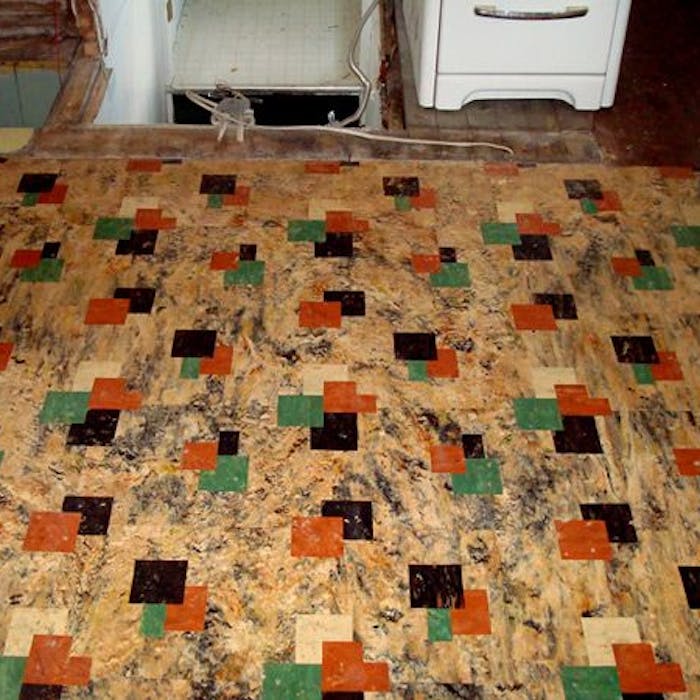
Linoleum - the product that floored a nation
Not long ago, in most houses in Britain, you could find the ubiquitous product linoleum, familiarly known as lino. Lino's glory days are now over, but for around a century, it was the material of choice for kitchen and bathroom floors and other rooms where it was a cheaper alternative to carpet.
The product came into being in Chiswick, West London, in around 1863. Its inventor was Frederick Edward Walton, who lived from 1834 to 1928.
In 1860, Walton established an experimental factory in Chiswick where he worked on oxidisation of linseed oil, for which he was granted a patent in 1860. His experiments were seeking a cheaper replacement for rubber. He discovered that combining the oil with cork and colouring agents produced a useful material for floor covering most commonly on a burlap or canvas backing., and in 1863 patented this new material.
Walton called this new cloth "linoleum". He moved his factory to Staines, and in 1864, formed the Linoleum Manufacturing Company which, by 1869, was exporting to Europe and the United States.
His perfection of the manufacture of linoleum would lead to it covering many many kitchens and other floors the world over, and it was widely used and popular from the 1870s onwards. Originally in quite drab colours, then came patterns - perhaps reaching their peak in the pre-War thirties with Art Deco designs, and with the Post-War quest for brightening up homes by DIY improvement from the 1950's to 1970's.
It has subsequently been eclipsed by other materials, including vinyl and wood laminates, but it is still manufactured.
Further reading
Links to external websites are not maintained by Bite Sized Britain. They are provided to give users access to additional information. Bite Sized Britain is not responsible for the content of these external websites.
